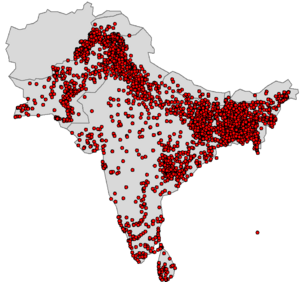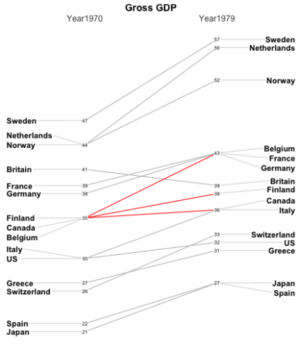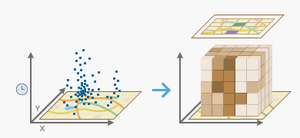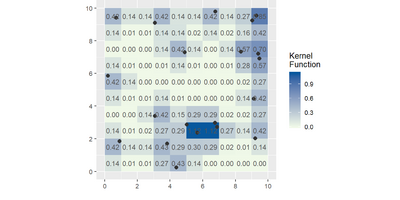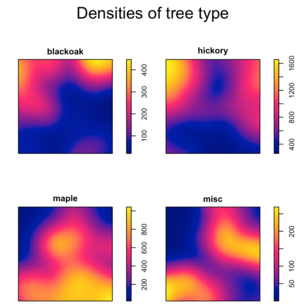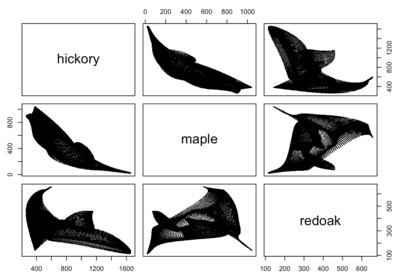Difference between revisions of "Group17 proposal"
Oisheeb.2019 (talk | contribs) |
Oisheeb.2019 (talk | contribs) |
||
| Line 117: | Line 117: | ||
|- | |- | ||
| '''Geoshaper()'''|| To create visualizations linked to map in Spatio-temporal analysis | | '''Geoshaper()'''|| To create visualizations linked to map in Spatio-temporal analysis | ||
| − | } | + | |} |
== References == | == References == | ||
Revision as of 23:57, 25 April 2020
Contents
Overview
The Armed Conflict Location & Event Data Project (ACLED) is a disaggregated data collection, analysis, and crisis mapping project. ACLED collects the dates, actors, locations, fatalities, and modalities of all reported political violence and protest events across Africa, South Asia, Southeast Asia, the Middle East, Central Asia and the Caucasus, and Southeastern and Eastern Europe and the Balkans. The ACLED team conducts analysis to describe, explore, and test conflict scenarios, and makes both data and analysis open for free use by the public. ACLED is a registered non-profit organization with 501(c)(3) status in the United States. In our project, we will focus on South Asia and the conflicts that have occurred in that region during a 4 year period.
Project Motivation
With the persistent existence of armed conflicts, it is important to understand the behavior of these events and how various factors impact the intensities of these events. This project aims at delivering an R shiny app that first provides a basic understanding of the nature of the armed conflict events, e.g. the different types of armed conflicts, the intensities in different countries in south Asia, and time series analysis to visualize the evolution of the armed conflicts with the impact in terms of fatalities over the period of 2016-2020 in South Asia. The detailed description of these variables are shown in the Section:Data Description. Geospatio-temporal analysis will be performed to identify the intensity of these armed conflicts in different regions across time. Finally, we will further deep-dive into how certain cross-border activities impact the armed conflicts using spatial-join analysis.
Proposed Analytical Methods & Visualisation
1. Exploratory Data Analysis
Overview Point Symbol Map : A symbol map will be used to do study the different types of the armed conflicts over different countries in South Asia. The visualization will be enabled with filters for countries as well as the conflict types.
Slope Chart : Compares the ranking of countries with respect to fatalities and the number of events of armed conflicts in South Asia over time to get a glimpse of the country wise ranking.
Calendar Chart : A calendar chart will be used to visualize the intensity of armed conflicts over different periods of time. It can be called as a time series heatmap which can be filtered based on the South Asian countries as well as the different conflict types to narrow down the insights.
2. Spatio-Temporal Analysis
Spatial Temporal is used to analyse the data across both space and time at the same time. The intent of this analysis is to describe the armed conflicts at a certain location and time. With the help of interactivity in the visualization, the user will be provided with the ability to customize the location and time in the spatial temporal analysis.
To establish this analysis, point pattern analysis will be used to study the spatial arrangement of points in a 2 dimensional space. The spatial temporal analysis will be linked to a study region linked to the point pattern analysis.
A kernel density plot will be used to highlight the density of the events in the selected filters through a heat-map. The kernel approach computes the localized density of the subsets of the study area.
3. Analysis of Multitype Point Patterns
A multitype point pattern is a marked point pattern in which marks are categorical variables. The armed conflicts data is marked with a number of attributes such as event type (Protests, Riots, etc.) and the parties involved in the conflict (Vigilante Group, Labour Group, LGBT, etc.), and therefore the intent is to investigate whether points with different marked values are segregated, or if there are there any spatial variations in the types of mark. Users will be able to indicate the different marks and mark types which they'd like to include in the analysis, and separate density plots of each marked type will be generated. Additionally, pairs plot will be used to visualise the relationship between the density plots.
Ripley's K-function (L-function) will be used to perform multi-distance spatial cluster analysis, which aims to quantify the second-order properties of the observed point processes. The intent of this analysis is to understand how the occurrence of an armed conflict event increases or suppresses the probability of another event nearby.
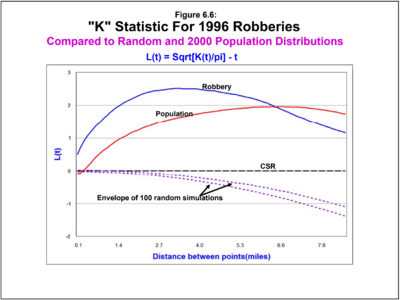
Project Timeline
Data Description
ACLED data is used for this project that has been extracted from the data gathered by Armed Conflict Location & Event Data Project (ACLED). The data is extracted for a period of 4 years from 1st January 2016 to 31st December 2019, and the area of focus is South Asia (India, Pakistan, Sri Lanka, Nepal and Bangladesh). The dataset consists of 100996 events and is comprehensive with various attributes that can be associated to conflict occurrences and are used for different analyses. Some of the key attributes that shall be considered in the analysis performed in this project are mentioned in the table below.
| Data Fields | Description | Example | Datatype |
|---|---|---|---|
| data_id | unique identifier for each event record | 4746257 | Categorical |
| event_date | The day, month and year on which an event took place. | 1-FEB-19 | Date |
| lat | This field records the latitude in decimal degrees. | 30.209423 | Numeric |
| long | This field records the longitude in decimal degrees. | 67.018009 | Numeric |
| year | The year in which the event took place. | 2019 | Numeric |
| event_type | The type of event. | Protests | Categorical |
| country | The country in which the event occurred. | Bangladesh | Categorical |
| fatalities | The number of reported fatalities which occurred during the event. | 0 | Numeric |
Spatial
Software Tools
- RStudio: https://rstudio.com/
Proposed R Packages
| Packages | Purpose |
|---|---|
| tidyverse() | To do data manipulation and exploration with dplyr() etc |
| sp() | To create spatial objects from shape files |
| plotly() | To help with creating visuals for exploratory analysis |
| ggplot2() | To create elegant data visualizations using grammar of graphics |
| leaflet() | To create maps within the application |
| spatstat() | To analyse spatial data |
| Shiny() | To create interactive web application for the final product |
| Geoshaper() | To create visualizations linked to map in Spatio-temporal analysis |
References
1. https://acleddata.com/#/dashboard
2. https://mgimond.github.io/Spatial/point-pattern-analysis.html
3. https://en.wikipedia.org/wiki/Point_pattern_analysis
4. https://www.omnisci.com/technical-glossary/spatial-temporal
Team Members
- Oishee Bhattacharyya
- Jaideep Ballani
- Denise Adele Chua Hui Shan

